Greek Religion A level OCR
1/93
Earn XP
Description and Tags
Name | Mastery | Learn | Test | Matching | Spaced |
|---|
No study sessions yet.
94 Terms
aetiology
the reason or cause for something, often deriving from a mythical explanation
Homeric Hymns
inform us what Greeks thought about the gods in around 700 BC, focusing on the creation of the gods
Homer
8th or 7th Century BC, credited for composing the Iliad and the Odyssey
Hesiod
c. 700BC,also and epic poet ,his two main works are the Works and Days and the Theogany.
anthropomorphism
the attribution of human characteristics and emotions to non-human forms
Panthenaic Amphora
333 BC -332 BC, black figure, armed Athena striding forwards, anthropomorphic depiction of the goddess, details reveal her power.
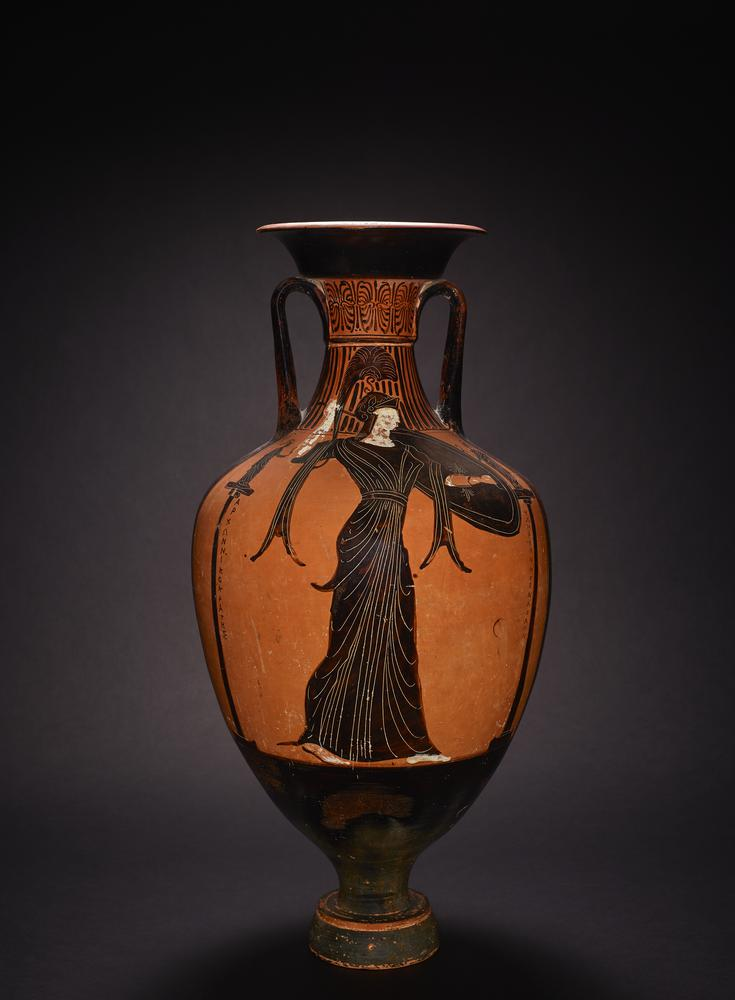
MS: James Redfield on gods in the Illiad
argues that the gods are a 'chief source of comedy' in the Illiad.
MS: Jasper Griffin on Homeric gods
insists that Homer's epics are full of 'really impressive gods' who deserve the worship they receive.
MS: William Allan on portray
argues that the gods are not portrayed as being amoral, but instead offer divine justice
Asclepius
Mythological physician worshipped as a god by healing cults called Asclepions.
What did people do at Asclepions
bathing near the sacred snakes and other healing rituals
sleep in the stoa or under the stars (incubation)
undergo treatment and/or surgery from physicians who were under the guidance of Asclepius
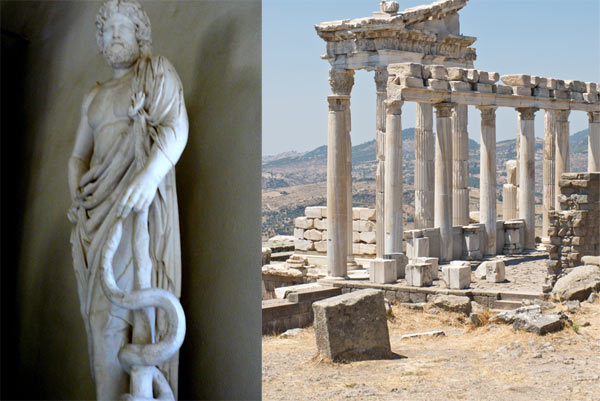
votive offering
a dedication to a god by an individual as part of a 'contract' or vow made between mortal and deity. these were often displayed outside of Asclepions.
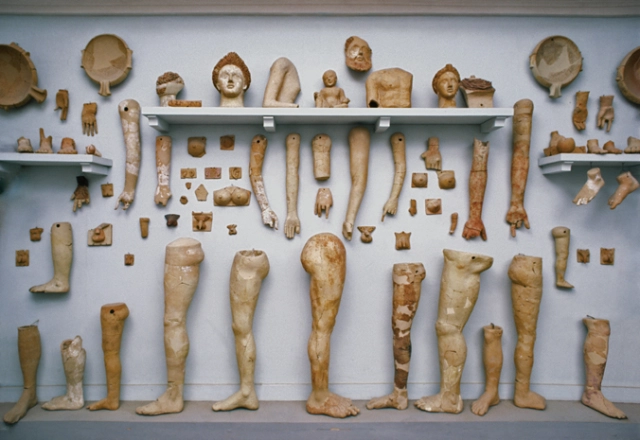
Votive Offering Prescribed Source
1st C. AD, made by Tyche for Asclepius and Hygeia (his daughter), for ailment of the leg
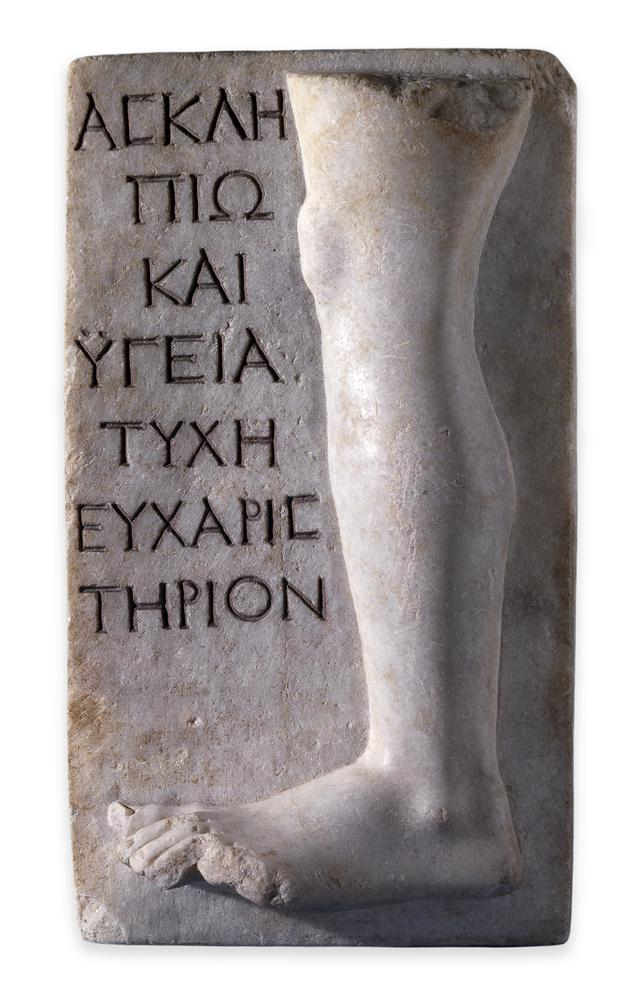
what ancient phrase describes the recipricol relationship between
'do ut des', literally 'I give so that you might give'
MS: Jon Mikalson, on reciprocal relationship
“Reciprocal relationships [between gods and men] were based on honour rather than love.”
Levels of Worship
panhellenic, localised and personal.
Levels of Participation
household, deme, polis and panhellenic
epithet
an adjective that accompanies someone's name ,which denotes a quality or characteristic about the individual.
agora
the marketplace, the communal centre of economic, political, social, religious events
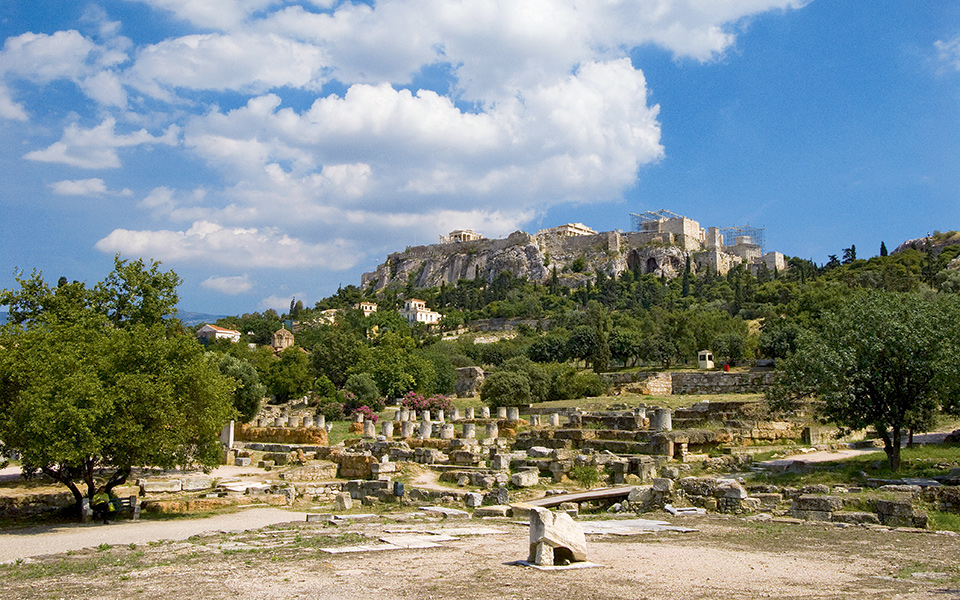
Zeus Agoraios
Zeus 'of the agora'. There was an altar of Zeus agoraios in the Athenian Agora. Overseeing the selling, buying of goods and administration.
Zeus Phratrios
Athenian citizens belonged to one of 10 tribes, men also belonged to a smaller clan group called a phratry. Zeus was a patron deity of these phratries.
Zeus Philios
god of individual and household well-being, prosperity and purification.
Zeus Herkeios
Zeus 'of the fence/courtyard', was protector of families. Protected the house from within, a snake statue in the courtyard.
Zeus Ktesios
protector of property and wealth, represented by a two-handled vase with wool ribbon in storeroom
Apollo Agyeios
protected the house from without, represented by a statue of Heracles outside main door
Heroisation
the process by which a living person becomes a hero/is made a hero.
What’s a hero?
a hero was someone who achieved something unusual in their lifetime - but this wasn’t always a positive thing.
Cleomedes
Heroised Olympic athlete who killed his opponent, destroyed a school and dropped a roof on 60 children
Types of Hero Cults (5)
Oikist Cults - cults at the graves of founders of colonies - Brasidas at Amphipolis
Named heroes - cults for heroes from epic and major myth - Oedipus at Athens, Pelops at Olympia, Achilles at Leuce
Local heroes - cults to heroes of local significance - Erechtheus at Athens
Bronze Age tombs - cults to unnamed heroes who have Bronze Age tombs
Minor heroes - cults to people who died violent or unusual deaths - at Marathon, struck by lightning, swallowed by the earth
MS: Gunnel Erkroth on heroes
argued that heroes could be real people or mythological figures and that ‘the main distinction between a god and a hero was their death'
MS: Robert Parker on polytheism
'the tendency of the Greeks to appeal to a plurality of gods, appears in this area of life more clearly than in any other'
Thesmophoria
an Athenian festival reserved only for female citizens celebrating fertility
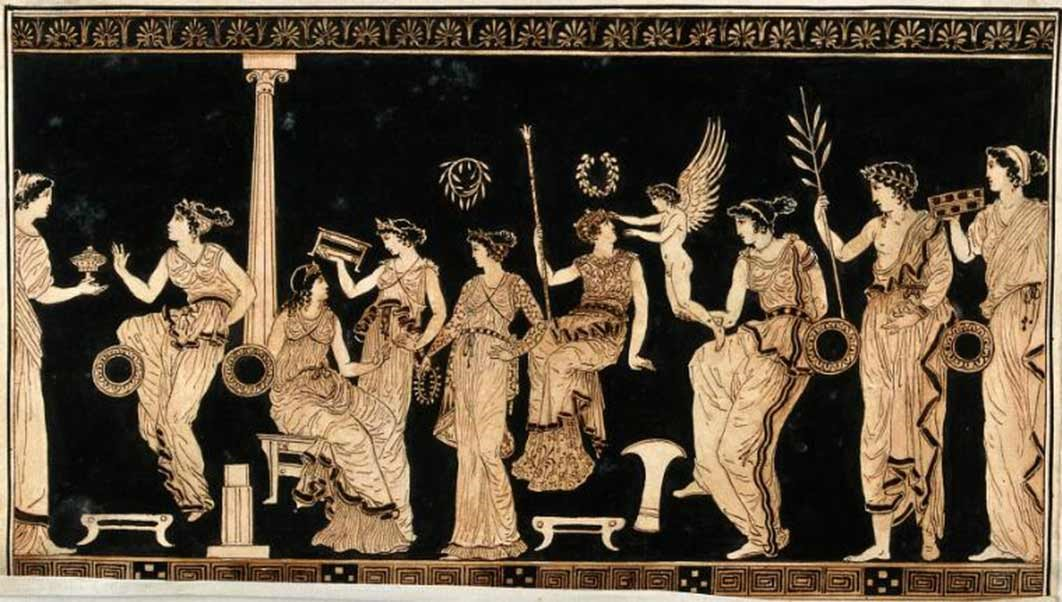
The Elusinian Mysteries
A mystery cult originating from Eleusis, Athens.
Eleusinian Mysteries origin story (summary)
From the Homeric Hymn to Demeter:
Distressed by Persephone’s abduction, Demeter wanders to Eleusis where she (disguised as an old lady) stays with the king and queen, Keleus and Mateneira
There, Demeter nurses their baby Demophon, feeding him ambrosia and putting him to sleep in hearth’s fire to make him immortal
The queen finds out, is horrified to see her baby in a fire, Demeter throws Demophon to the ground (killing him) and reveals her true godly form
To repay her for their insolence, Demeter instructs Keleus and Eumolpus (origin of Eumolpidae priests) to build her a temple - the Telesterion - and to worship her through secret rites
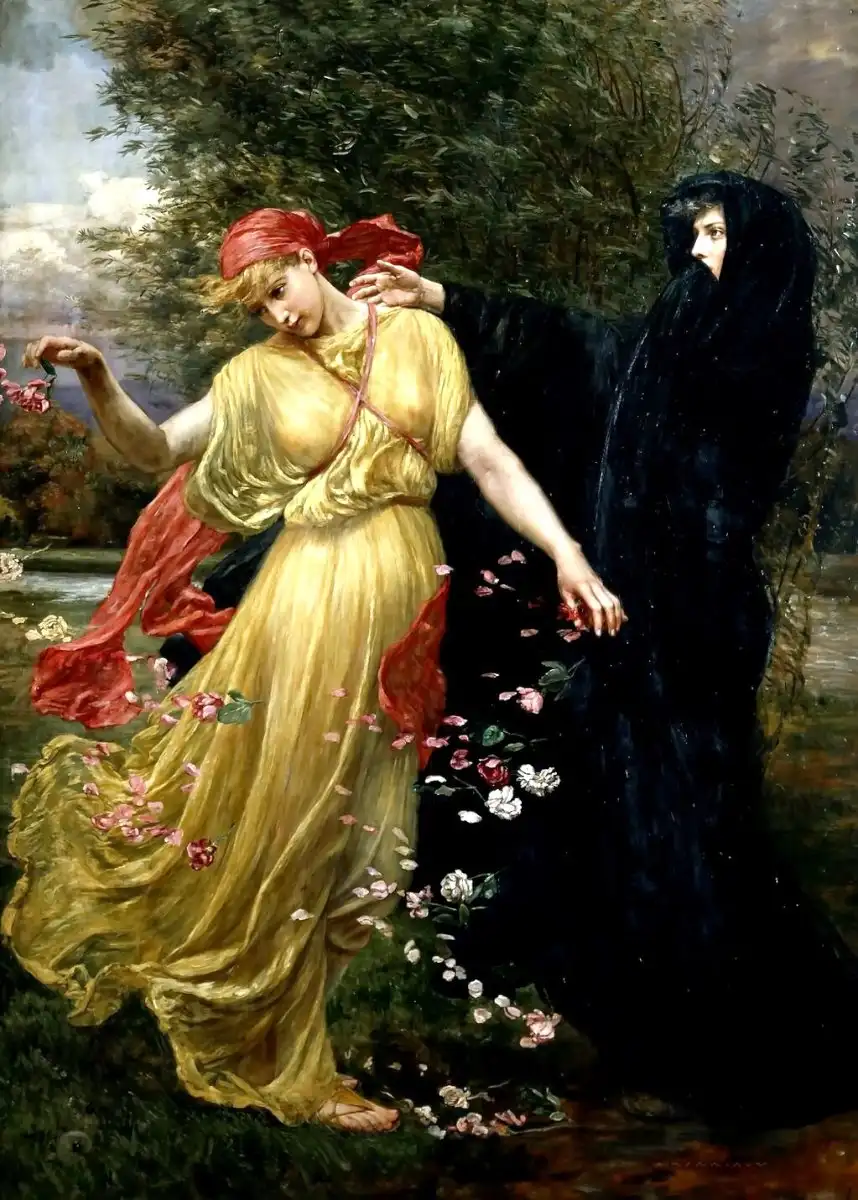
Joining Conditions of the Eleusinian Mysteries
1. Anybody could be initiated, man or woman, free or slave. As long as they spoke Greek and was not a murderer.
2. Every Participant able to pay a contribution could take part in an individual initiation.
3. The initiated were not allowed to speak about what happened, in particular the revelation of the secret.
Alcibiades vs. The Mysteries
Alcibiades was accused of mocking the Mysteries in his home together with friends and some uninitiated.
He was also accused of defacing Herms, statues of Hermes (face + phallus).
Despite the fact that he was not in court to defend himself, Alcibiades was convicted.
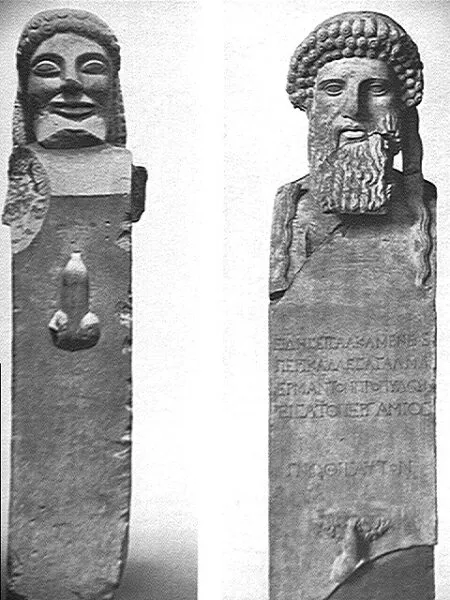
Telesterion
Was renovated and enlarged by Pericles, in the second half of the 5th century. Very large, with rock-cut theatre stands for spectators and initiates.
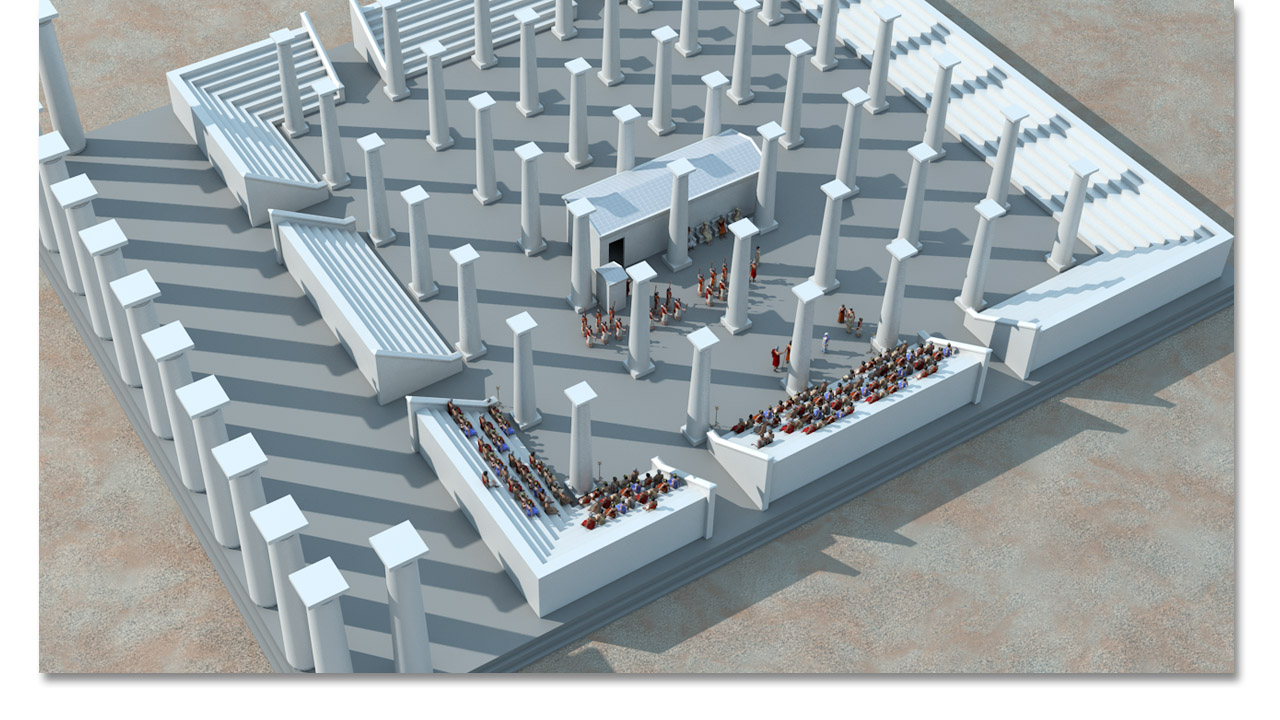
Epopteia
revelation of the secret after initiation into the Eleusinian mysteries.
Ninnion Tablet
400-300BC
main image: depiction of the cult of Eleusis, from left to right: initiates are approaching the seated goddesses Demeter and Persephone.
significance: key visual source for the ritual taking place within Eleusinian Mysteries
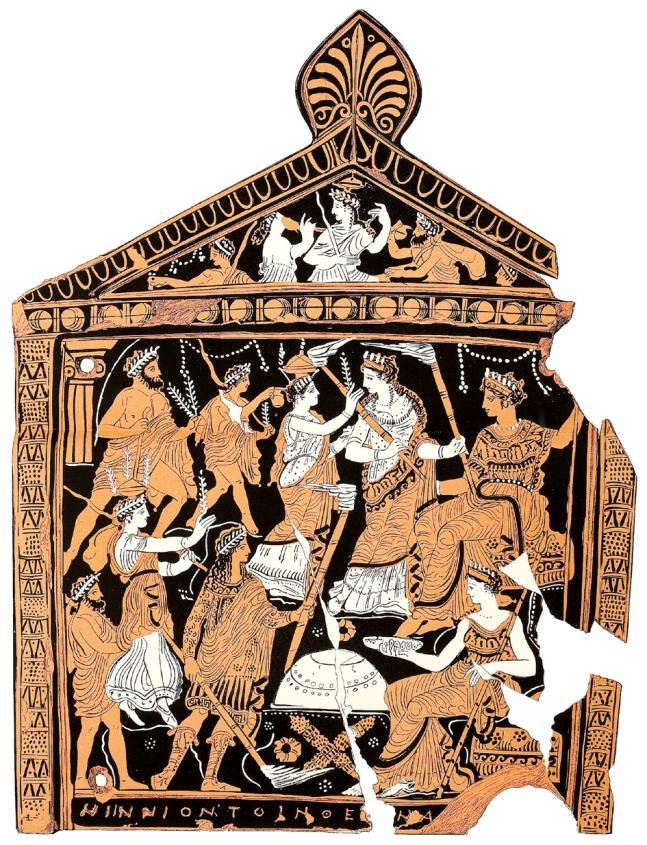
Elysian Fields
mythical place, conception of the afterlife initially reserved for gods, heroes and mortals related to them
Mystagogue
already initiated person who is also able to initiate others
Myst
person wishing to be initiated or in the process of being initiated
Hierophant
leading priest at the Eleusinian Mysteries, always from the Eumolpidae family
Lesser Mysteries
Festival celebrated in the spring. Thought to be the preparatory event for the 'Great Mysteries'
Greater Mysteries
Held in the autumn. Celebrated over a period of nine days.
Details of the Greater Mysteries Festival
Day 1: 3,000 mystagogues and mystes assemble in the Athenian Agora.
Day 2: The whole group, including sacrificial animals(most likely piglets), marched to the seaside to bathe together as a purification ritual.
There is a three-day rest period
Day 4: Assembled once more in the agora, the group formed a procession. Led by the hierophants they embark on a 15 mile-long journey along The Sacred Way to Eleusis.
Journey is interrupted by dances, libations, sacrifices, singing hymns, and playing flutes.
The young mocked the old during the journey - roles reversed. Worshipped Aphrodite and Iacchus (leader-god of initiates)
Two more days - completely secret. Fasting and drinking kykeon (special brew). Emphasis on reliving the myth and possible simulation of death, epopteia.
two famous sanctuaries of Asclepius
Asclepeion at Epidaurus, centre for pilgrims seeking cure from a wide range of illnesses
2. Sanctuary of Asclepius on the island of Cos, a famous school for physicians
Archon Basileus
King Archon, responsible for all things religious in Athens
kykeon
brew made from barley and pennyroyal, which is said to have psychotropic effects
Oracle at Dodona
Oracle of Zeus at Dodona in Epirus. Supposedly the oldest oracular sanctuary in Greece.
Herodotus and Hesiod mention that oracular responses emanated from the rustling leaves of the sacred oak or from doves sitting in the tree.
Oracular Tablets
Lead tablets with questions scratched onto them, awaiting an answer from the oracle. Common practice from 5th cent BC onwards.
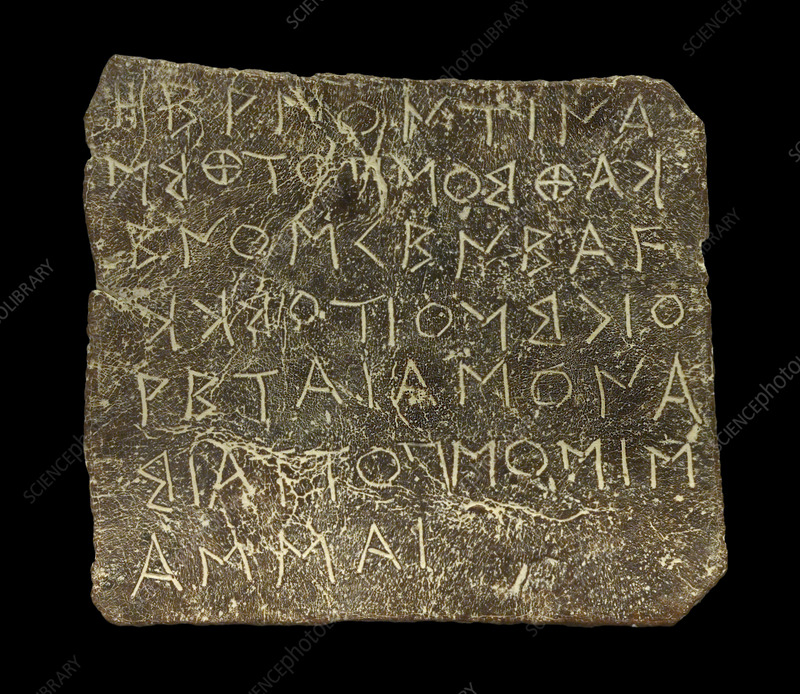
household religious symbols
The Hearth - dedicated to Hestia. New members of the family; babies, brides or new slaves - were welcomed into the home with a small ceremony of walking around the fire with dried fruits and nut confetti.
The Herm - rectangular pillars with the bearded head of the Hermes. They stood both as halfway markers on roads and as a protective symbol outside houses.
Sanctuary of Artemis at Brauron
just south-west of Athens. Girls would dress up like bears at the festival of Artemis Brauronia. This was required for all Athenian girls before they could marry.
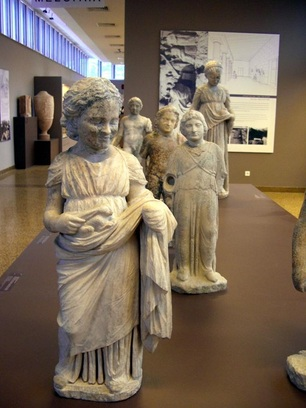
stoa
a small building where people could take shelter from the rain, wind and sun. Could also house shops inside
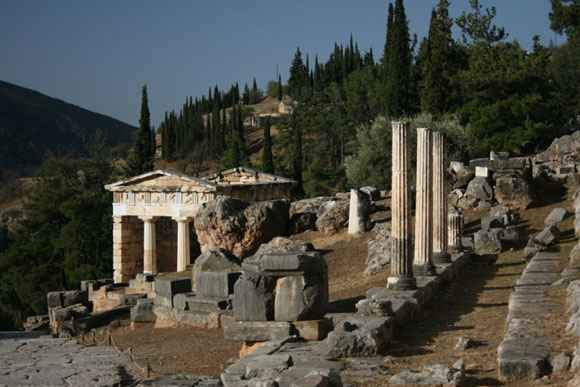
Panhellenic Games/Festivals
Delphi - to Pythian Apollo -Pythian Games
Olympia - to Olympian Zeus - Olympian Games
Nemea - Nemean Zeus -Nemean Games
Isthmus - to Isthmian Poseidon - Isthmian Games
hecatomb
a great public sacrifice of 100 Oxen (later on, just 12 oxen)
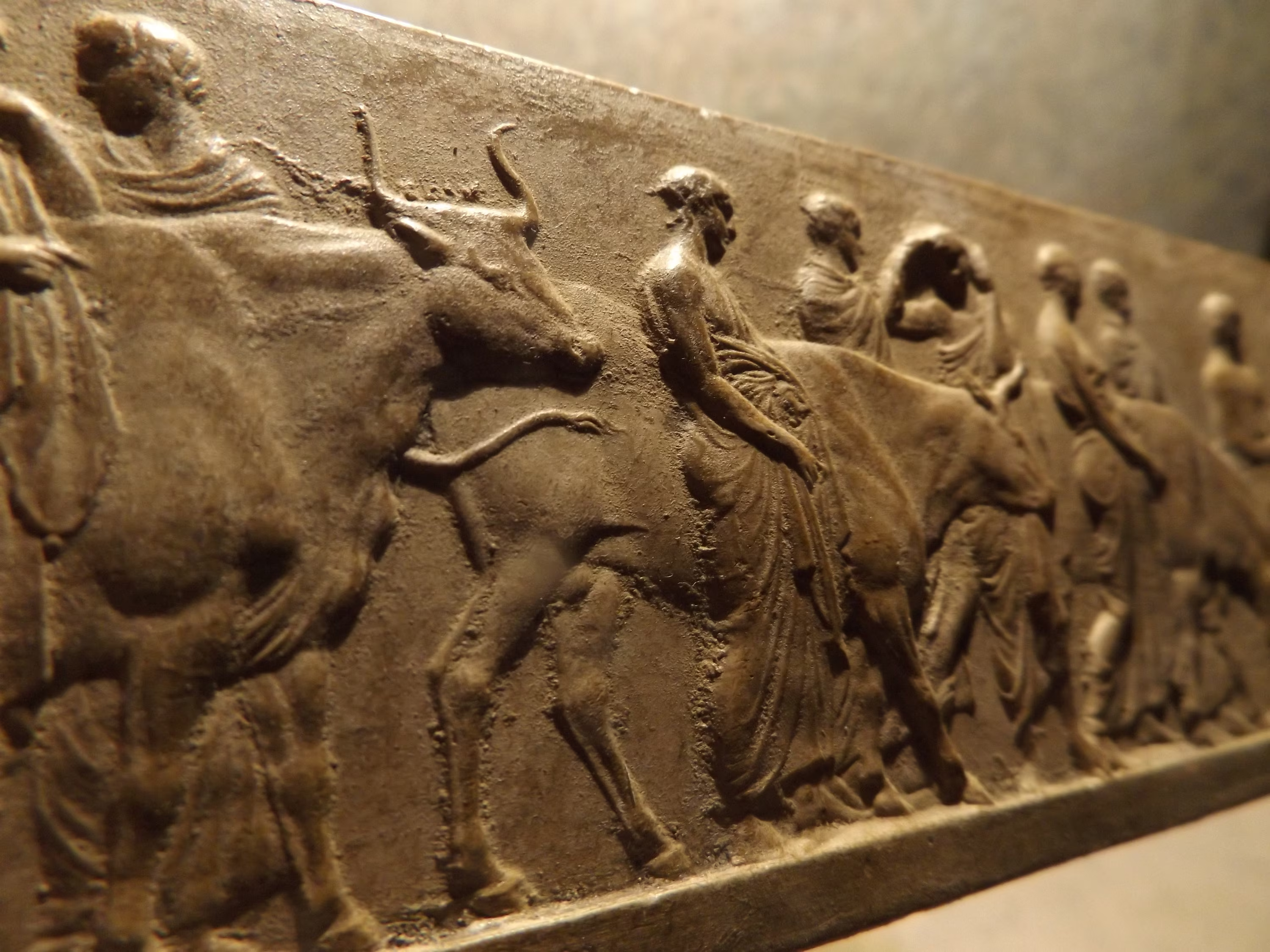
Athene’s Peplos
Athenian maidens spent 9 months weaving Athena a new saffron peplos, depicting Athena’s battle with the giant Encelados.
At the end of the procession, the peplos would be draped over the statue of Athena Polias.
Panathenaia Overveiw
Annual Athenian festival for Athena’s birthday - every four years they held the Great Panathenaia.
Contests were held - charioteering, footraces, music, poetry etc. Prizes were usually olive oil and money.
A hecatomb was sacrificed at Athene’s altar, best parts given to Athena Nike.
Civic officials, treasurers, generals, and maidens who carried vessels were given their share on the acropolis. The remaining meat was distributed in the cemetery.
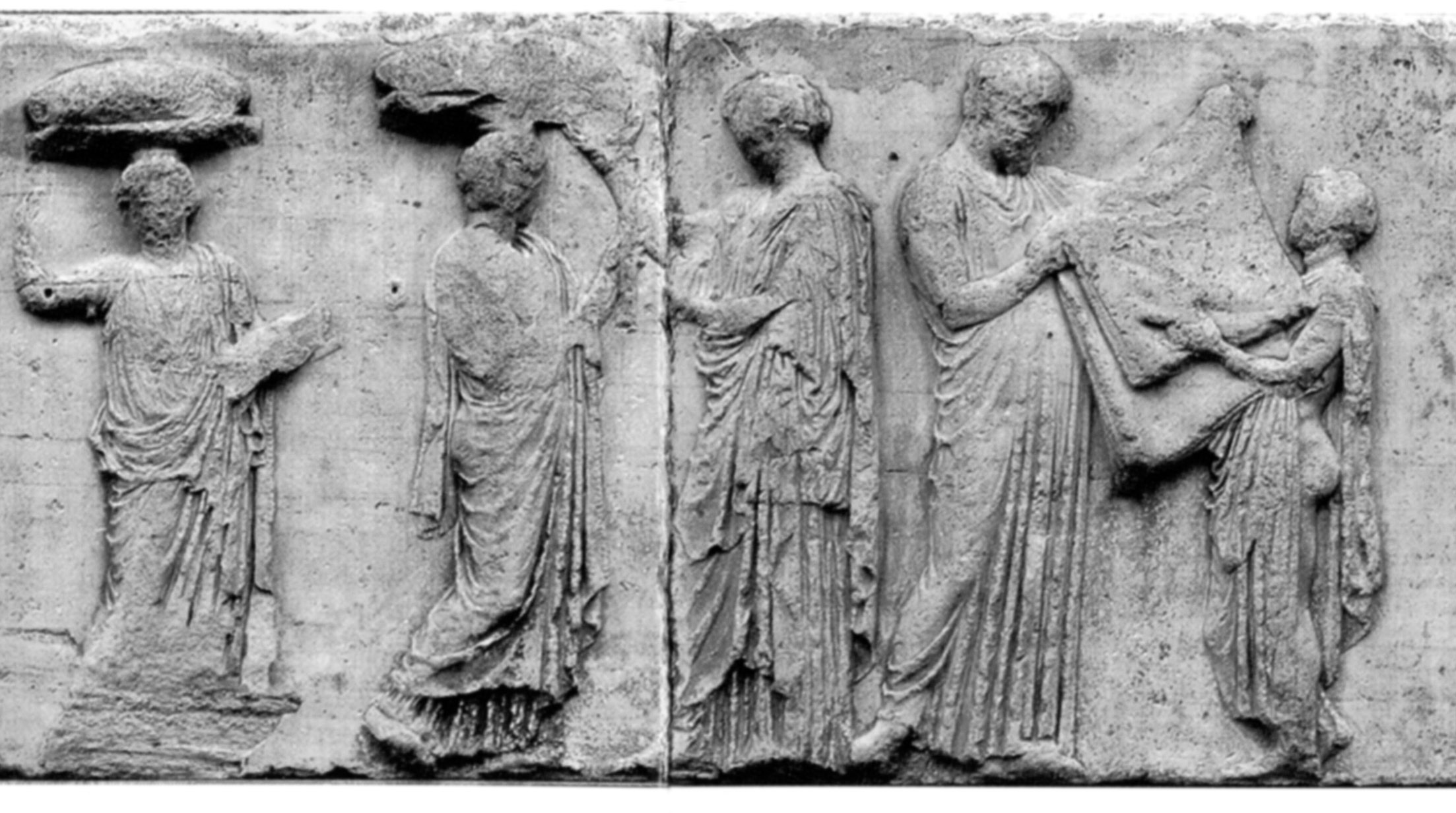
Panathenaic Pompe
pompe = procession.
Began at Dipylon Gate on the outskirts of the city. Eventually the Pompeion was built there, the size and existence of shows the importance of the festival.
The procession went through the cemetery, the agora and up to the acropolis through the propylaia (elaborate gateway to the acropolis).
The route is called the Panathenaic Way, and was 10 metres wide.
The Great Panathenaia
At the Great Panathenaia, the peplos was larger, depicted Athena and Zeus. It was used as a sail on a boat in the procession, and was draped on the chryselephantine (gold + ivory) statue of Athena in the Parthenon.
Eponymous Archon
After whom the year was named after, oversaw the civil festivals e.g the City Dionysia in honour of Dionysus.
Polemarch
the 'war archon', in charge of cults that were related to military affairs, e.g. Artemis Agrotera, to whom sacrifices on the battlefield were made.
Apobates (Panathenaic Contest)
literally 'dismounting': an equestrian race unique to the Great Panathenaia, taking place along the Panathenaic Way.
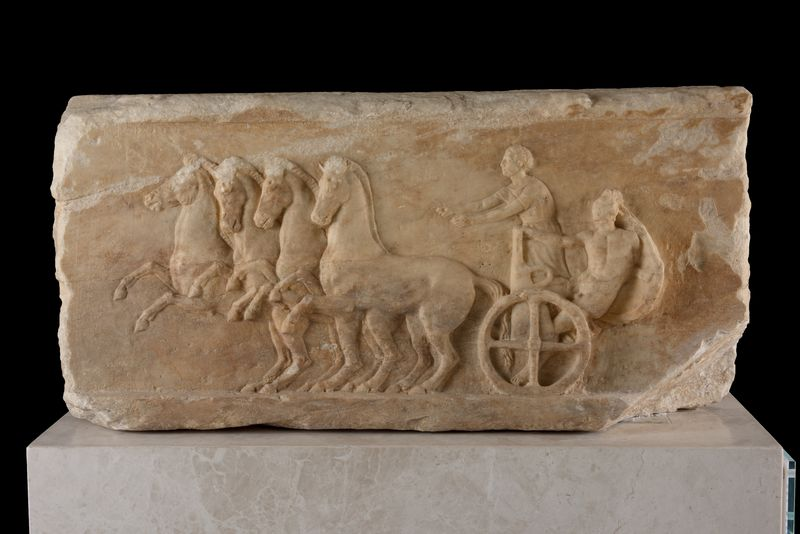
Euandrion (Panathenaic Contest)
literally, 'fine manliness': a tribal contest beauty contest for men, the winner would lead the pompe
MS: Louis Zaidman on religious life
'religion was present in each and every civic activity'
Miasma
impiety or pollution, a religious and societal serious offence.
Various ways one could become polluted
1. giving birth
2. being dirty physically
3. not honouring the gods in the right manner on the right days
4. disrespecting ancestral laws of burial
5. disrespecting someone's right to xenia
6. having sex
7. attending a funeral or being near a dead body
8. murder
9. entering the home of a woman who had just given birth.
Links between politics and religion (6)
1. peace treaties were sworn by oaths to the gods, Zeus Horkios being the god of Oaths.
2. before cities went to war, the gods were consulted.
3. Law courts had jurisdiction over religious matters as well.
4. Civic funds were housed in temples and religious sanctuaries
5. military victories were celebrated to honour the gods, e.g. the Athenians erected a stoa at Delphi in thanks for the advice concerning the Persian invasion.
6. the opening of the Athenian Assembly meeting began with the sacrifice of a piglet, whose blood was spattered over the assembly members.
pediment
the triangular space at the top of the Parthenon
East Pediment → Birth of Athene
West Pediment → Athene vs. Poseidon
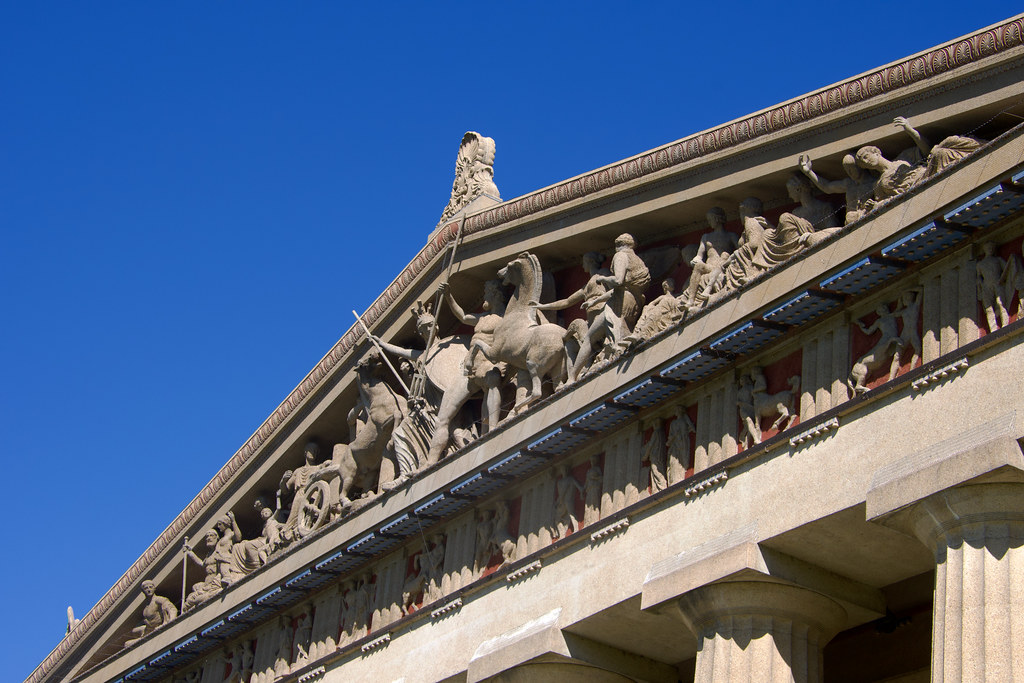
Doric frieze
square images, called metopes, divided by triglyphs imitating columns
North: Fall of Troy
South: Lapiths vs. Centaurs
East: Gods vs Giants
West: Athenians vs. Amazons
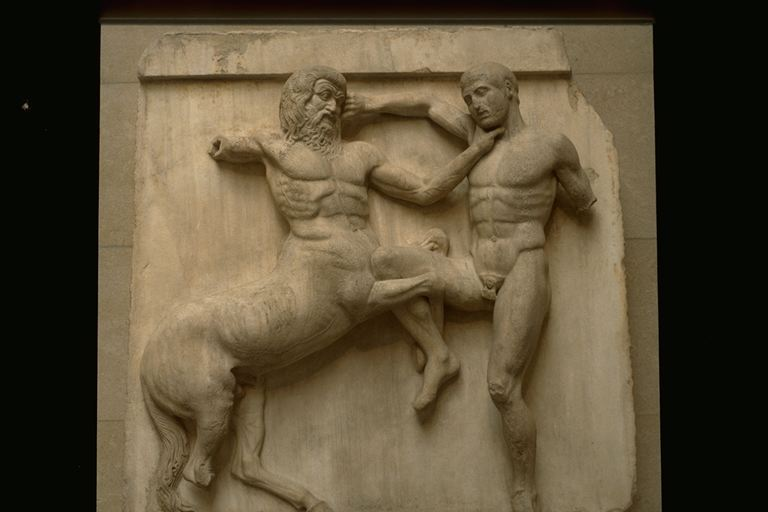
Ionic Frieze
Continuous, uninterrupted sculpture wrapping around the building. Some parts were very detailed, even though this was on the inside and very few would see it.
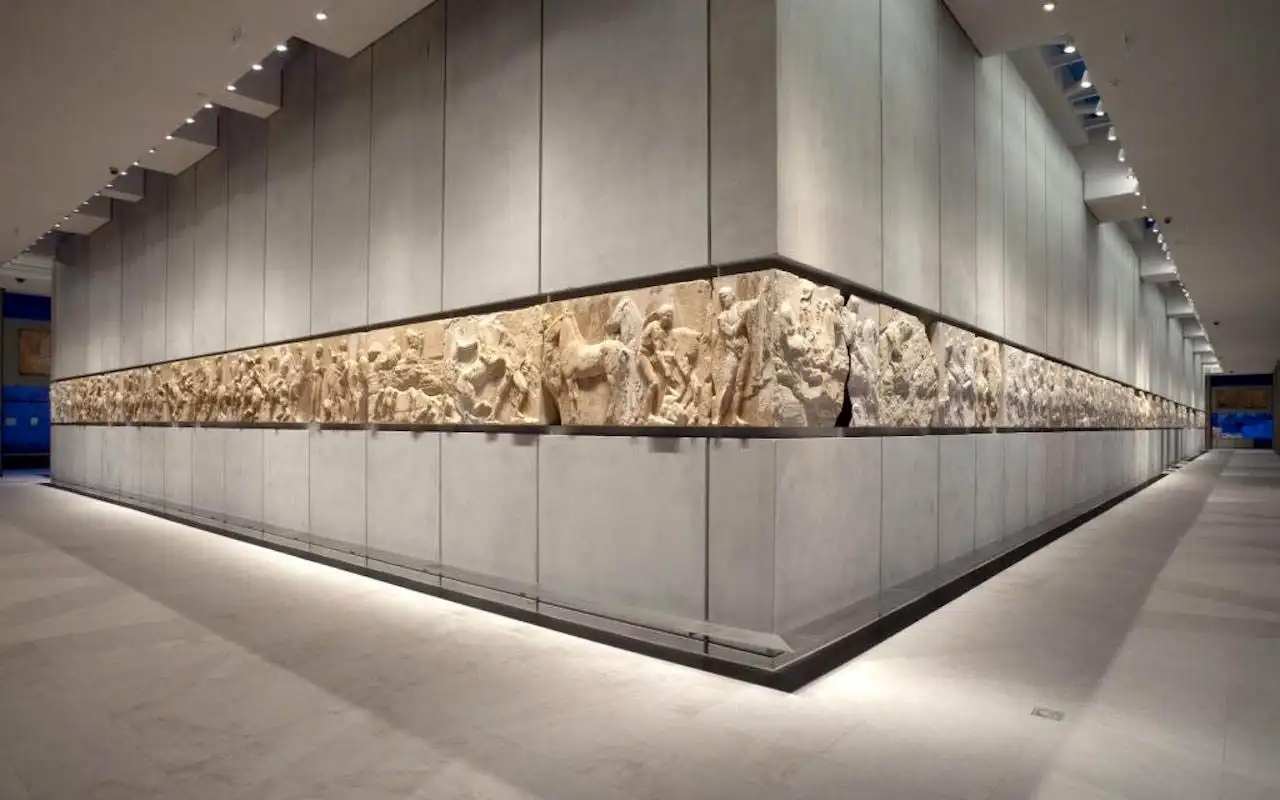
The Erecthion
The most sacred spot on the Acropolis. Replaced the “Old Temple”. Located where Athena and Poseidon competed for patronage of Athens.
Named for Erechtheus, Athena’s semi-son and the hero from whom all Athenians claim descent.
Houses the tomb of the mythical king of Athens, Kekrops, who had the head of a man and the body of a snake.

Details of the Erecthion
The temple is built on a slope, there is both an olive tree and a salt-water spring.
The following deities were worshipped there: Athene Polias, Zeus, Hephaestus, Erectheus and Kekrops. There are dedicated altars to each.
Acropolis Contextual Myths
Kekrops: He was the judge of the contest between Athena and Poseidon. After his death, the Athenian crown went to Erechtheus, Athene’s “son”.
Erectheus: Hephaestus once attempted to rape Athena, but was unsuccessful and ejaculated onto the acropolis, thus fertilising Gaia, and siring Erechtheus. After the baby is born, Athena placed him in a box which she gave to Kekrops’ daughters with instructions not to look in it. Two of the daughters looked and went mad, diving off the Acropolis to their deaths.
Historical Context of the Acropolis
Acropolis has been occupied continuously since the Bronze Age (16th-12th c. BC)
Previous temple to Athena Parthenos on the acropolis was destroyed by the Persians in 480 BC.
The Athenians left the acropolis bare for 33 years as part of an oath after the battle of Plataea as a reminder of barbaric impiety.
Pericles, organised the rebuilding of the acropolis.
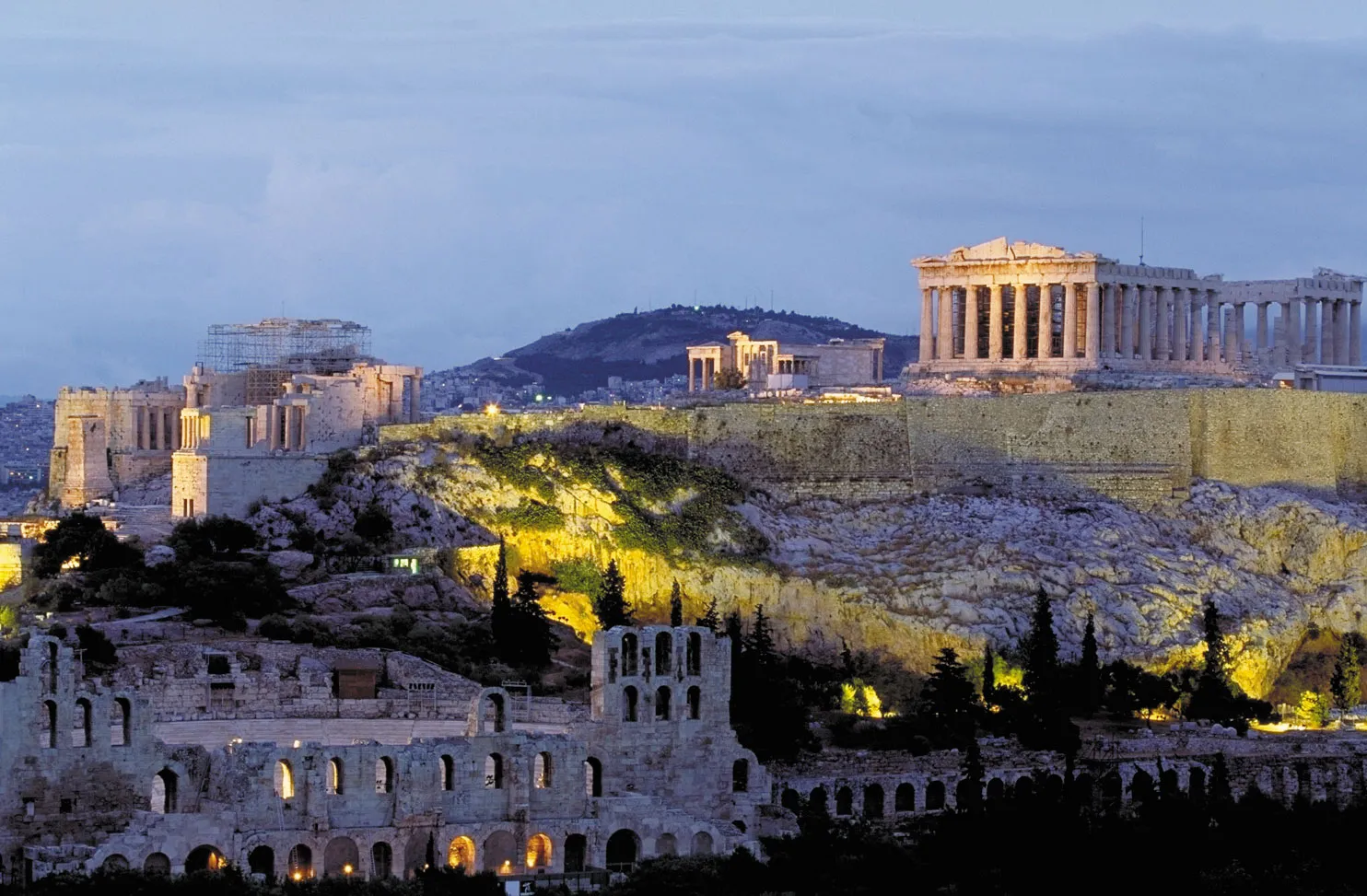
Karyatid Columns
Feature of the Erecthion’s southern porch
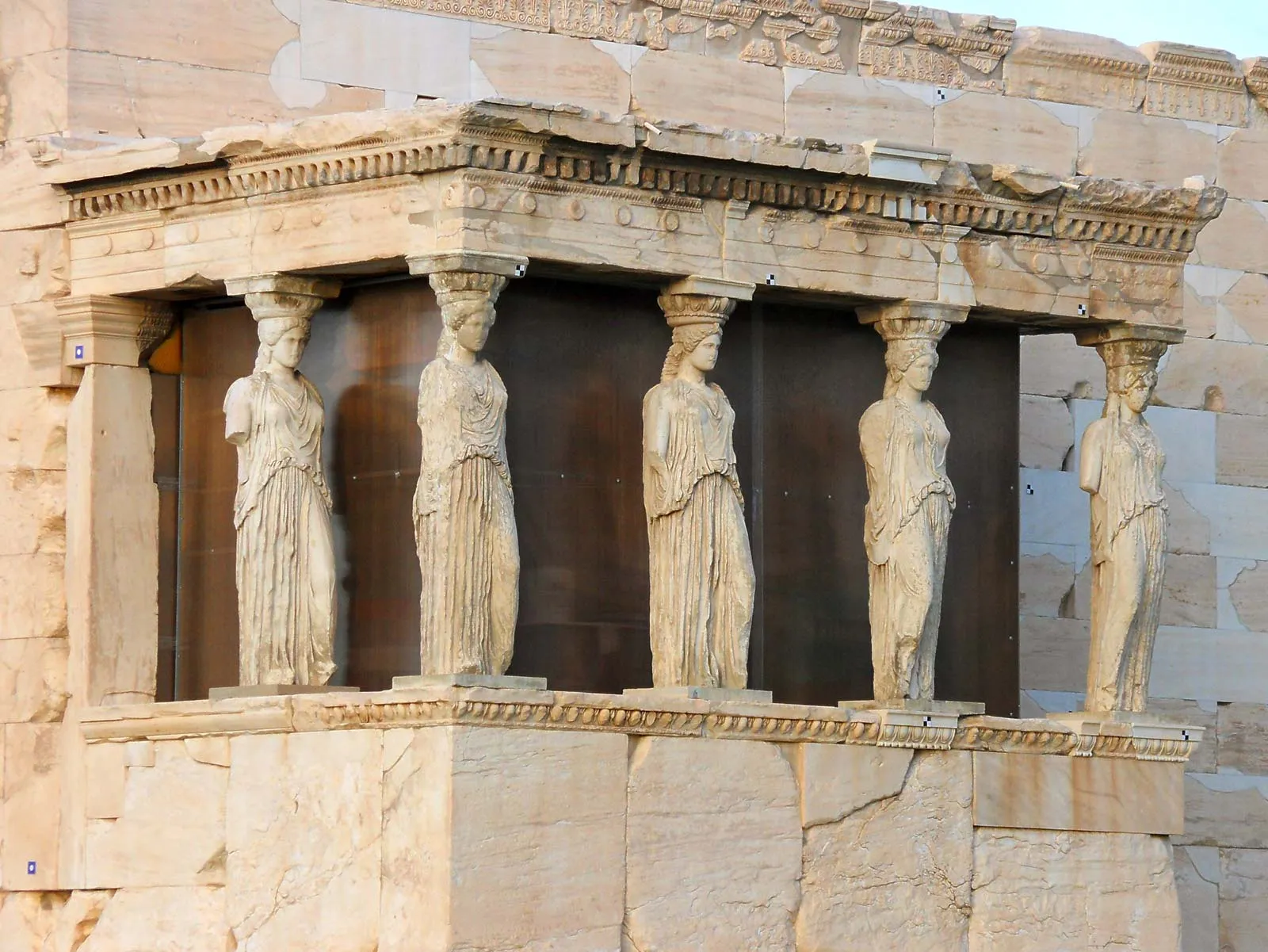
Delphi
Religious temenos (land marked for religious usage) on Mt. Parnassus.
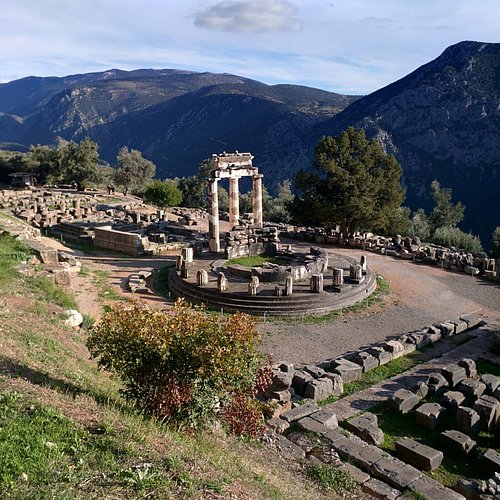
Delphi Mythological Context
Previously, Gaia was worshipped in a cave on Mt Parnassus. Guarded by her son, the serpent Pytho, she uttered prophecies.
Later on Apollo killed Pytho and left Delphi to cleanse himself, then returned to give prophecies himself.
Zeus sent two eagles flying in opposite directions, and they met back at Delphi, which was declared the omphalos, the centre of the world.
Pythia
The mouthpiece of Apollo - named after the snake, Pytho.
Previously was a virgin girl, but after a Pythia was raped, the job was given to married women over fifty, but the Pythia still wore young maiden clothes.
Selected from the most valued families in Delphi and lived a life of chastity and exercise.
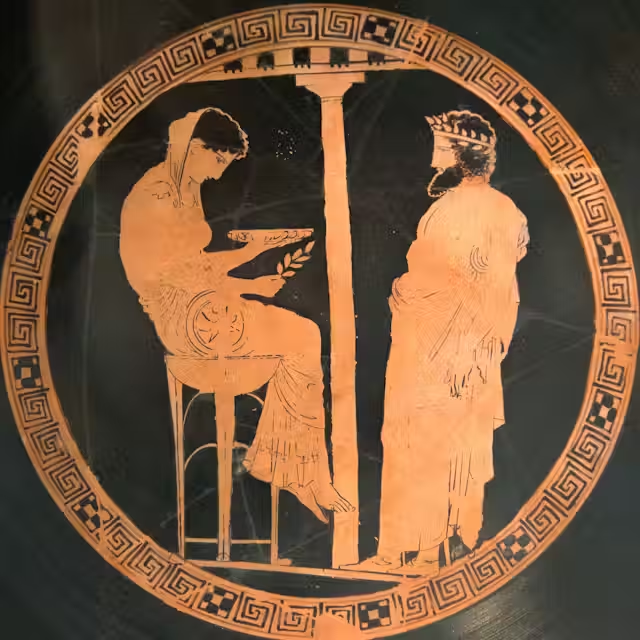
adyton
the 'forbidden room' behind the naos at the back of the temple
naos
the main room of the temple where the god's image was kept
treasury
this building has the same appearance and architectural orders of temples and was set up by city-states to house religious dedications and acted as a religious offering itself
Delphic Promanteia
Promanteia = the right to consult the oracle first.
All Delphians had this, but it could be earned through elaborate offerings along the Sacred Way (treasuries, statues etc.)
The Sacred Way (Delphi)
Path up to Temple of Apollo. Incredibly steep, steps at some points. Winding to represent the snake, Pytho.
Way up decorated with monuments, treasuries and offerings from various Greek cities.
Monuments of the Sacred Way
Bull of Corfu, for a good catch of fish.
Sphinx of Naxos, 10m high pillar with a sphinx on top, for the right to seek oracles first.
The 13 Arcadian soldier statues
The 38 Spartan statues placed directly opposite them
Serpent Column set up by a group of city-states to thank Apollo for their success at the Battle of Plataea against the Persians. 9m high, three intertwined serpents. Names of the 31 Greek cities involved are inscribed on the column (backhanded slight against other cities).
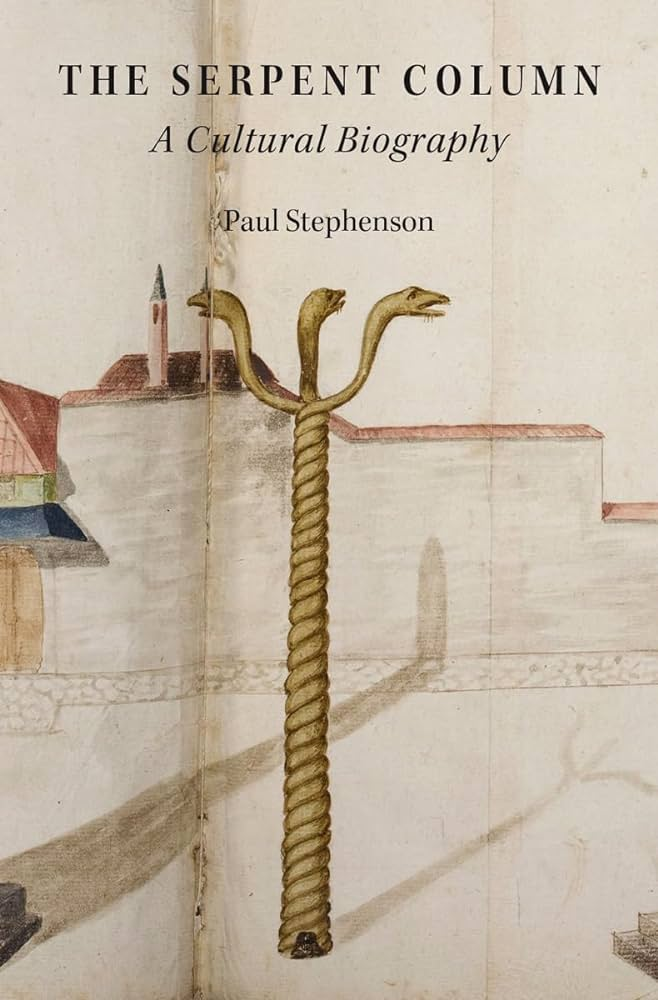
megaron
underground chamber for ritual burials, e.g. during the Thesmophoria, women ritually buried piglets, and excavated them a year later to fertilise the fields.
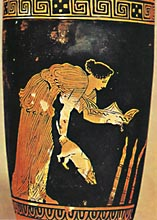
4 Ways to become a priest
Inheritance. Examples: Eumolpidae - descendants of Eumpolpos and Kerykes - descendants of Keryx (both high priests in Eleusinian Mysteries) and the Eteoboutae - priestesses of Athene Polias
Randomly selected from a lot. Most priesthoods were chosen by lot (of eligible candidates) or by vote on an annual basis.
Through purchase. Greeks could buy a priesthood. Male priesthoods cost more than female priesthoods.
The dying wish of an existing priest. This didn’t have to be a relative
Priestly Duties
Managed sacrifices (not exclusively)
Took care of the sanctuary, its buildings, any votive offerings and finances.
Managed the sanctuaries finances; they often served as banks for the state in times of crisis, and sources for individual loans.
Collected funding for religious activities
Prepped the sacrificial animals.
Why perform a blood sacrifice?
Provide meat for the community
Meat was not a common part of the Ancient Greek diet
To please or celebrate the gods
Communal activity
More commitment than libations
Interpret omens in entrails
Libations
Liquid offerings of water, wine, milk, honey or olive oil. Often poured from a jug into a bowl then onto the ground
Advantages
Less expensive
Less wasteful
Easier to do regularly
Less skill required
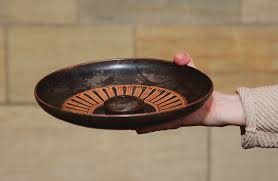
Pre-Socratic Philosophy
Rejection of supernatural explanations for natural phenomena (e.g. thunder = clouds hitting each other and lighting = small fires, not Zeus).
The laws of the universe are understandable and discoverable by humans
The investigation of what “stuff” is made of
sophists
teachers and philosophers who charged for their services, usually specialised in rhetorical argument
Socratic Method
the method of question-and-answer cross-examination as practiced by Socrates in public and at symposia
daimonion
a divine inner voice that supposedly guided Socrates